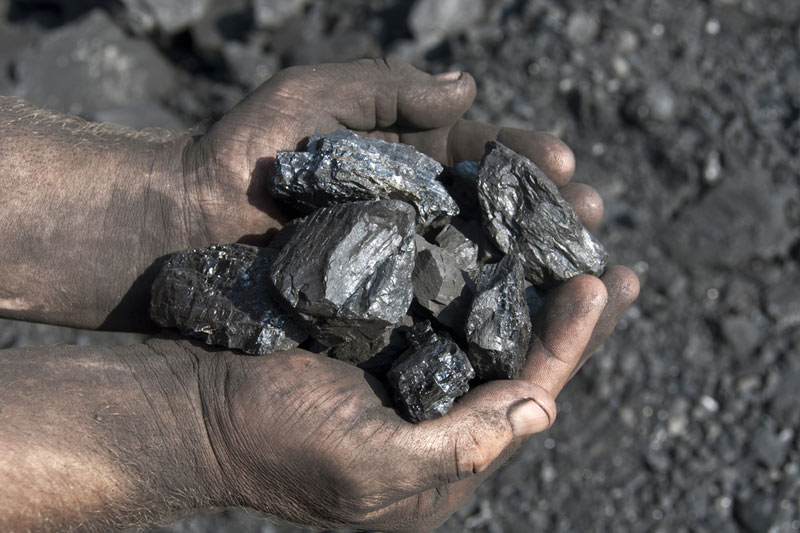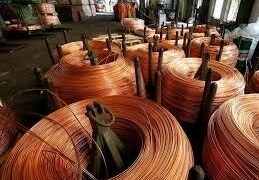 Trump’s Next Big Idea to Save Coal Is Miniature Power Plants
Trump’s Next Big Idea to Save Coal Is Miniature Power Plants(Bloomberg) — The Energy Department is thinking small to save the beleaguered coal industry — literally.
The agency wants to spend $175 million on a program that would include designing at least two small-scale, coal-fired power plants. The units would have a capacity of about 200 megawatts, roughly one-third the size of a typical generator that uses coal.
Steven Winberg, the assistant secretary for fossil fuel, told reporters at an energy conference in Houston last week the mini plants could be fired up more quickly than bigger ones. That would allow them to smooth out fluctuations in an electric grid that is increasingly dependent on renewable energy sources such as wind and solar that are subject to weather-related fluctuations.
The concept has left many in the coal and utility industries scratching their heads and drawn opposition from environmental groups.
“Building a new coal plant today is a bad idea, and building small, modular coal plants is an especially bad idea,” John Walke, director of the Clean Air Project at the Natural Resources Defense Council, said. “They are still dirty and the costs just don’t add up.”
But it has the backing of coal industry magnate and Trump ally Bob Murray, chief executive officer of Murray Energy Corp., the largest closely held U.S. coal miner. He included the technology on a list of policy priorities he gave Trump.
“It represents thinking out of the box,” Murray said. “I think it’s a wonderful idea.”
Related: Resilience Problem? What Resilience Problem? U.S. Grids Respond
The idea underscores President Donald Trump’s vow to help the coal industry, which has been in prolonged downturn related to competition from cheap . Nearly 270 coal-fired power plants have closed or been designated for retirement since 2010, including 22 since Trump was inaugurated, according to the Sierra Club, an environmental group.
It also comes after the Federal Energy Regulatory Commission rejected another pro-coal initiative by Energy Secretary Rick Perry that called for paying coal plants more to keep them running, which he said was necessary to ensure the resilience of the power grid.
“I think it’s time for us to have this conversation in a national way,” Perry told lawmakers during a budget hearing Thursday. “Are we going to make sure and take the steps to ensure that our nuclear and coal industries in particular are going to be viable alternatives and part of an all-of-the-above mix in our energy portfolio?”
Smaller coal plants can ramp up faster when power is needed to be quickly added to the grid — something large coal plants weren’t meant to do, said James Wood, who served as a deputy assistant secretary in the Energy Department’s Office of Fossil Energy during the Obama administration.
“If you do a number of 100 megawatt power plants you have a way to deal with the intermittency that renewables are providing on the grid today,” Wood said in an interview.
Earlier: White House Plan to Help Coal Shot Down by Trump Appointees
The American Coalition for Clean Coal Electricity, which represents companies such as American Electric Power Co. and Peabody Energy Corp., is seeking more information about the proposal, said Michelle Bloodworth, the group’s chief operating officer.
“From my limited understanding, there are not any plants of this type in the United States which is why this research by DOE is important,” Bloodworth said in an email. “Having smaller units that can be flexible in their ramping capabilities will be important to the coal fleet in the future.”
So far the idea has received a cool reception.
Alex Gilbert, co-founder of SparkLibrary, a Washington-based energy research firm, said small coal plants don’t address the impediments facing regular size coal plants: competition from cheaper fuel sources such as natural gas and renewables, as well as environmental permitting hurdles.
EIA Cuts 2018 U.S. Coal Production Forecast to 736 Million Tons
“I don’t see this having a potential application in the U.S. market,” he said.
A handful of small coal plants, some as old as 100 years, remain in use at universities and factories, said John Coequyt, a senior climate campaign director at the Sierra Club. “They are not particularly efficient,” he said.
“I really don’t think this is a viable idea,” Coequyt said. “I think it’s a viable tactic the Department of Energy can deploy to show they are still looking to advance coal.”
Utility American Electric Power, which operates about 15,000 megawatts of coal-generated power — nearly half of its generating portfolio — doesn’t have any plans to build more coal plants, spokeswoman Tammy Ridout said in an email.
“New coal technology has a long way to go to compete as a 24/7 power source with natural gas,” she said. “We continue to follow the technology developments related to coal generation, but we don’t believe that small modular coal plants will necessarily meet the needs of the industry, our customers and the energy grid.”
(Adds Perry remarks in 10th paragraph.)
Source: Investing.com





























